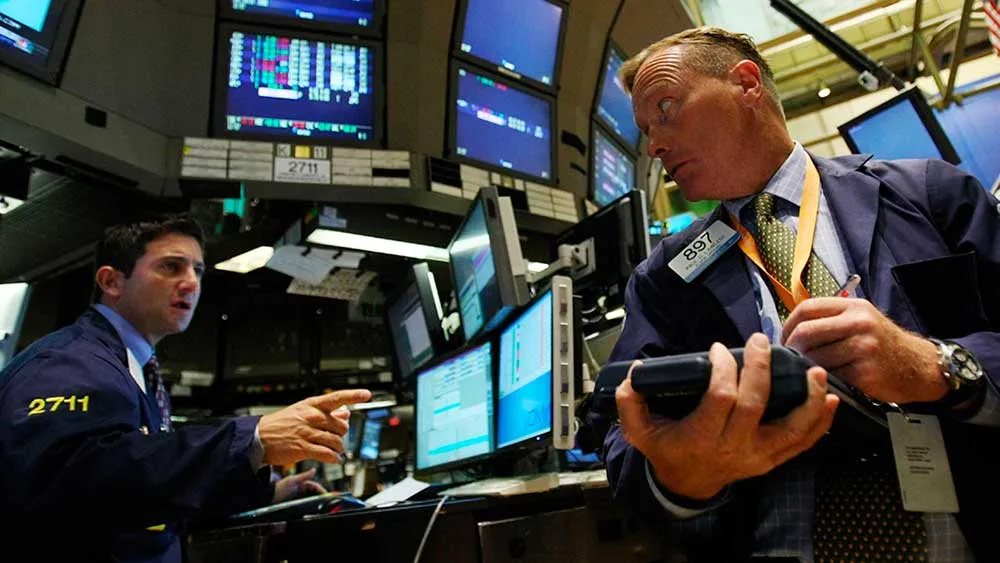A steady stream of daily option selling is increasingly acting as a speed bump for the stock market’s push toward new record highs. Throughout 2025, investors have leaned heavily into option-selling strategies from ETF overwrites and systematic zero-day-to-expiry (0DTE) trades to bank-engineered Quantitative Investment Strategies. Dealers on the other side of these trades typically rebalance by selling into strength and buying on weakness, creating a mechanical drag that can limit the market’s upside.
According to JPMorgan Chase & Co. strategists led by Bram Kaplan, that pressure has become more noticeable on rising markets than falling ones. In recent weeks, investors have shown a stronger preference for selling calls rather than puts, amplifying the effect. UBS Group AG, meanwhile, highlights a retail-favorite strategy the short iron condor as another factor contributing to the trend.
As traders increasingly anchor their risk management around extremely short bursts of volatility, options expiring within zero to five days have become dominant. Zero-day contracts now represent roughly 60% of total S&P 500 Index options activity, an all-time high.
The short iron condor where traders sell a call spread above the market and a put spread below has gained significant traction among retail participants. UBS strategists say the heavy use of one-day-to-expiry iron condors has played a role in suppressing recent upward moves in the S&P 500.
“This 1DTE iron-condor flow is leaving a very clear mark on SPX options positioning, to the point where it may be influencing the underlying index,” said Kieran Diamond, derivatives strategist at UBS.
The strategy seeks to generate premium as long as the index stays within a tight range. But as the S&P 500 approaches the upper call strike particularly during the final half hour of trading market makers who have taken the other side of these trades must hedge more aggressively. UBS notes that both the width of spreads and the distance between strikes have expanded in recent months, increasing the scale of hedging required.
While overall market-maker gamma exposure from 0DTE options moves rapidly throughout the trading session, most activity still comes from investors selling options. Dealer exposure is especially skewed toward upside call strikes. Lower implied volatility on those contracts increases the gamma per unit of notional, intensifying the hedging impact.
“The biggest risk lies on the upside, where SPX market makers hold very large long gamma exposure from the calls sold by condor traders,” Diamond said. “To manage that risk, they need to sell equities as the index rises toward those strikes which makes it incrementally harder for the S&P to stage a strong intraday rally.”
The final minutes of the trading day are often the most sensitive. On Oct. 24, UBS estimates that dealer gamma in the S&P 500 surged to nearly $90 billion just 10 minutes before the close. In practical terms, a 0.1% move in the index at that moment would have triggered a staggering $10 billion of buying or selling.
Though futures markets can usually absorb these flows, they still carry price impact. In theory, this dynamic increases the odds of markets gapping higher during overnight sessions in Asia or Europe, once US dealer hedging pressures fall away at the close.
“There were several sessions in October where the market struggled to break above the levels where long gamma was concentrated,” Diamond said. “But once the options expired after the close, the index often rallied more freely.”
These patterns have sparked interest in potential arbitrage opportunities for example, buying a one-day option at the close and selling it at the next morning’s open, when hedging forces reset. Dealer gamma effectively clears each day at 4 p.m. New York time, creating a temporary reset window.
Still, not everyone is convinced that iron condors or other short-dated trades are materially influencing market behavior.
“Out of the 25 or so different factors pushing markets around at any given time, this is just one of them,” said Chris Murphy, co-head of derivatives strategy at Susquehanna International Group. “It gets more attention than it deserves.”
Others question whether the wave of systematic short-option selling especially if driven by retail traders can last.
“Any systematic short-option strategy tends to collect premium effectively until volatility spikes, and then the convex losses can wipe out months or years of gains,” said Garrett DeSimone, head quant at OptionMetrics. “Even with strong risk controls and good timing, the strategy often leaves investors sidelined for so long that many lose patience and pull their capital.”

Subscribe to our newsletter!
As a leading independent research provider, TradeAlgo keeps you connected from anywhere.








